Author Archives:Lydia Sampson
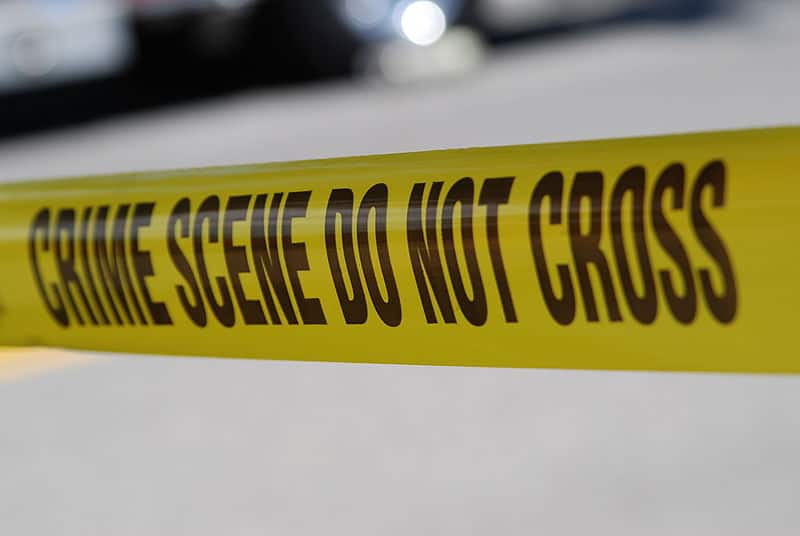
3
MayConfessions of a True Crime Fanatic
 Guilty as charged- I am an avid reader of books about murder and serial killers. At the moment, I can’t put down Lost Girls: An Unsolved American Mystery, by Robert Kolker, about the homicides of five women who advertised as escorts on Craigslist. While most know John Grisham for his novels, I preferred his foray into non-fiction with The Innocent Man: Murder and Injustice in a Small Town, the account of the exoneration of a death row inmate wrongfully convicted of murder.
Guilty as charged- I am an avid reader of books about murder and serial killers. At the moment, I can’t put down Lost Girls: An Unsolved American Mystery, by Robert Kolker, about the homicides of five women who advertised as escorts on Craigslist. While most know John Grisham for his novels, I preferred his foray into non-fiction with The Innocent Man: Murder and Injustice in a Small Town, the account of the exoneration of a death row inmate wrongfully convicted of murder.
I finally read Ann Rule’s classic, The Stranger Beside Me, a chronicle of a crime spree involving the homicide of at least 30 women. In an utterly remarkable coincidence, the true crime author landed the contract to write a book about a serial killer on the loose in the 1970s, only to find out that the murderer was her friend and former coworker, Ted Bundy. Rule later wrote Green River Running Red, about the “Green River Killer” in the Pacific Northwest. After finishing that one I checked out Green River Killer: A True Detective Story, a graphic novel about the same subject.
When not reading books about true crime, I spend my free time watching shows and movies and listening to podcasts in the same genre. To anyone else who binge-watched The Jinx: The Life and Deaths of Robert Durst, or Making a Murderer, I recommend the series The Staircase, about Michael Peterson, the crime author accused of murdering his wife.
In the feature length category, I enjoyed both the documentary Team Foxcatcher, and movie Foxcatcher, about John du Pont’s murder of wrestler Dave Schultz. Recently released, the film My Friend Dahmer, based on a graphic novel by the same name, chronicles the young life of the cannibal killer, before he began taking lives.
During my daily commute I listen to Casefile, with its mesmerizing and anonymous Australian host, and Criminal, which extends to crimes including Venus flytrap theft and the abuse of the Tennessee Walking Horse. For lighter fare, My Favorite Murder combines true crime and comedy, as the hosts chat about real-life horrors not as experts but as fellow true crime fans. They end each episode with their catch phrase, “stay sexy and don’t get murdered!” Real Crime Profile digs deep into cases in the media spotlight thanks to TV series such as The Case of: JonBenét Ramsey and The People v. O.J. Simpson: American Crime Story, looking at them through the lens of behavioral analysts and FBI criminal profilers.
Please do not judge me or accuse me of voyeurism or gawking at others’ tragedy! It turns out I am not alone in this fascination with the macabre. The true crime genre is extremely popular, among women in particular. Prolific crime writer Ann Rule estimated that 85% of her readers were female, according to an article about this phenomenon in Cosmopolitan.
Why, though, do women gravitate toward the sick and twisted? These are some reasons, I suspect, behind our guilty pleasure:
Relatability: Margaret Atwood once said, “Men are afraid that women will laugh at them. Women are afraid that men will kill them.” With some exceptions like Aileen Wuornos, whose crimes are recounted in the movie Monster, women are the victims of male serial killers. Men simply can’t identify with these stories the same way that women can.
Cautionary tales: Given that some risks disproportionally impact women, true crime tales teach us what to do and what not to do in the face of an attack, and how to protect ourselves. Memorize license plates. Preserve DNA evidence. Notify others about where you are going, and with whom. Don’t get into cars with strangers. Never hitchhike.
History: I mainly read non-fiction. I love constantly learning about historical events, and thinking about how they inform the future. The serial murders recounted in true crime narratives really happened. I feel it is important to know about the “summer of Sam” and Pogo the Clown, should things like this come up. The history of scientific progress encompasses the evolution of forensic investigation, including fingerprint, ballistics, and DNA analysis.
Justice: Although some perpetrators elude capture, most true crime stories follow a similar arc in which a reign of terror and frustrating hunt for a killer culminate in the discovery and apprehension of a “bad guy.” Usually evidence abounds and the murderer goes to trial, gets convicted, and ends up behind bars, or even sentenced to death. This “happy ending” provides comfort, sending the message that bad guys get punished, and justice prevails.
Lydia Sampson is the Technical Services department head at the Morrill Memorial Library in Norwood, Massachusetts. Read Lydia’s column in the May 3, 2018 edition of the Norwood Transcript and Bulletin.
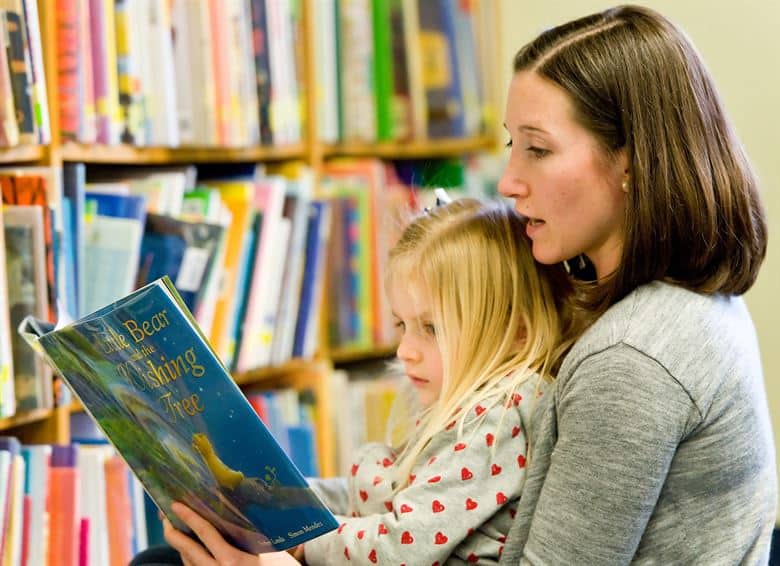
26
AprBeing the Mom Versus Being a Librarian
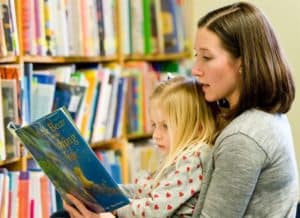 Everyone assumes that if you work with children professionally, you’ll be a natural in the parenting department. There definitely are some overlaps that help with the adjustment to family life, but some things are harder to translate.
Everyone assumes that if you work with children professionally, you’ll be a natural in the parenting department. There definitely are some overlaps that help with the adjustment to family life, but some things are harder to translate.
Working as a children’s librarian has kept me abreast of current issues in the parenting world and in particular, in the world of early literacy. I know all the stages and signs of pre-literacy and how to build to a good foundation for lifelong readers. I encourage and advise parents about this topic regularly as part of my job at the library.
Now it is time for my great confession: I find it easier to read to other people’s children than my own. Dear reader, please don’t be too shocked. Of course I still read to my child often.
Every two weeks, I bring my daughter’s giant canvas library bag to work and fill it with books as I imagine the two of us snuggled on the couch, reading away the hours. And sometimes that does happen. But sometimes, my daughter gets frustrated with me when I leave off the last word of a sentence and look at her expectantly to fill it in, as I advise so many parents to do when they read in order to facilitate children’s ability to predict a rhyme or what will happen in a story.
Sometimes I get frustrated with her when she doesn’t love a story or my delivery of it as much as the kids in story time did. Sometimes I’m annoyed when she’s overtired and can’t sit still during bedtime stories. Sometimes she doesn’t like the books I choose.
In contrast, reading to kids during story time provides constant positive feedback. I know what books will work with toddlers in a group setting. I know what new silly story will get the preschoolers giggling or how to find the perfect long picture book to read aloud with grade school kids. I know how to get their attention, how to get their wiggles out, and how to keep the flow going.
We clap for ourselves after I finish reading and I tell them what good listeners they are. And when I see kids enjoying themselves while learning something and parents who are happy, I know I’m a good librarian. It’s extremely enjoyable and much less fraught than being a mom.
Let’s be real; there is no applause as a parent. There is often no immediate reward for the things we do but we do them because we want the best for our children. Reading to your kids is pretty much like the experience of parenting itself: it’s occasionally amazing, occasionally horrible but most of the time it’s pretty good. Above all, it has to be done.
This has been written about extensively but it bears repeating: reading aloud to your children is the greatest way to build early literacy skills and encourage a lifelong love of reading. And when it goes well, it’s a great way to bond and relax together as a family. With that in mind, here are my best tips for a smooth read-aloud from my combined experience as a librarian and a mom:
Mix it up: Kids love books with characters they know. We get tons of requests from kids for books with well-known TV characters. I used to cringe at this in my pre-child years but now I know that acceptance is the price of freedom. Bring home a few Paw Patrol and Barbie books along with Make Way for Ducklings or The Velveteen Rabbit. Everyone will be happy.
Find the right time: We usually think of bedtime as the best time for stories. For some families, that works. For many of us, bedtime is a time when we are tired, stressed, and almost out of patience. Save the longer stories for when everyone is at their best and read a few short books to get the job done before bed.
Audiobooks: if you have trouble reading aloud, it could be time to bring home one of our picture books with a CD or one of our new Vox books and let someone else do the reading. These have saved my sanity and let me enjoy the book along with my daughter.
Bookmarks: Know when it’s time to stop and introduce the concept of the bookmark. If reading with your children isn’t going well or you don’t have much time, pop a bookmark in the book you’re reading and tell your kids you’ll save it for later. Sometimes kids and adults are relieved to know we don’t have to finish a book in one sitting.
Try nonfiction: We don’t always have to read our kids fictional stories. If you can find a nonfiction book on a topic you both enjoy, reading to your child will be enjoyable and informative!
In the library world, librarians are always striving for children and families to have a perfect experience at the library. It’s our job to read all the right books and sing all the silly songs and be cheerful all the time. In the real world, perfection is the enemy of happy families. Once I learned to leave my expectations as a librarian at the library, reading to my child became much easier and more enjoyable. Of course, when all else fails, I go back to one of my tried and true mom strategies and let dad handle it.
Kate Tigue is a children’s librarian at the Morrill Memorial Library. Read Kate’s column in the April 26, 2018 issue of the Norwood Transcript and Bulletin.
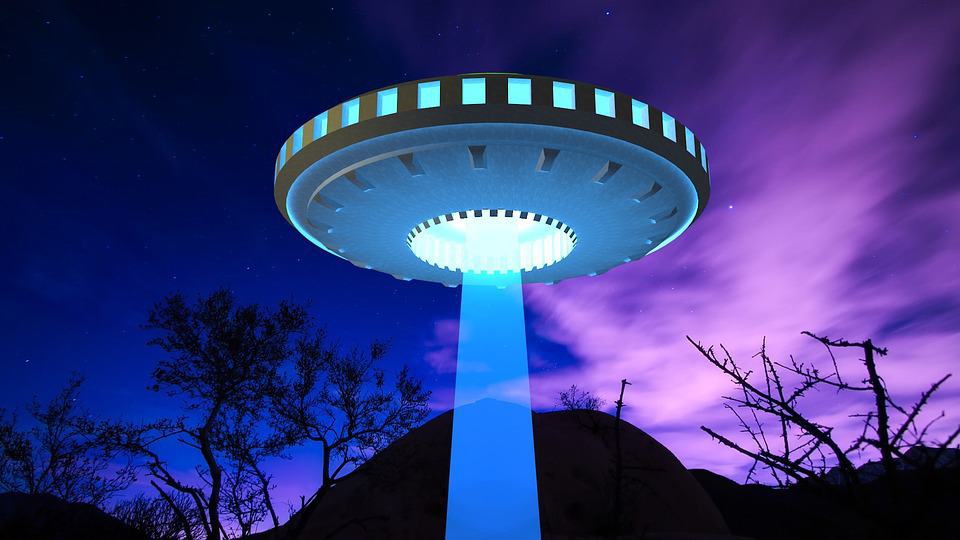
19
AprLittle Green Mountain Men
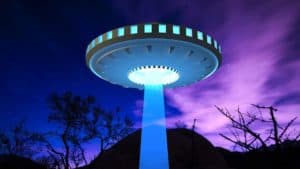 A few months ago, my husband and I were having dinner at my sister’s house when my sister floated the idea of buying a family vacation property. We gave her some grief about buying a Kennedy-esque compound on Nantucket Sound so we could “summer,” until she said, “No, I’m serious. Let’s buy that Vermont house you always wanted. Life’s too short, let’s do it.”
A few months ago, my husband and I were having dinner at my sister’s house when my sister floated the idea of buying a family vacation property. We gave her some grief about buying a Kennedy-esque compound on Nantucket Sound so we could “summer,” until she said, “No, I’m serious. Let’s buy that Vermont house you always wanted. Life’s too short, let’s do it.”
This dinner conversation started us down the road (a loose term in this case) to cabin ownership. Over the next few weeks, we scoured the internet for available properties in the Northeast Kingdom, spoke to realtors, and had one memorable stay with a very kind, but very odd Airbnb host named Carl on a weekend trip to walk land and see houses. After some harrowing drives up steep grades and trying to get the feel for land buried beneath thigh-deep snow, we finally selected a rustic home at the end of a unpaved mountain road.
Our new abode is minutes from the best mountain biking New England has to offer, has an incredible view, was surprisingly affordable, and most importantly, has no cell coverage or high speed internet. It is the ultimate getaway…except that this area has a history that reads like an X-Files episode.
While trying to locate the phone number for the town clerk online, I found that an abandoned Air Force satellite tracking station occupies the summit of the mountain our new house sits upon. While this may not be exciting in itself, it is purported to be the first station to have detected the presence of a UFO that supposedly abducted Betty and Barney Hill in while they were driving along Rt. 3 outside of Lincoln, NH (now the site of a historical marker detailing their claims).
Unfortunately, this was just the beginning of suspicious activity on the mountain, which ultimately included two tragic deaths. Researching these events got me thinking about how every community has its own strange history. Luckily, there are oodles of resources on the topic.
The first book I picked up, Fantastic Folklore and Fact: New England Tales of Land and Sea by Edward Rowe Snow, deals with classic New England lore. Even familiar stories, like that that of the Willey disaster or of Lizzie Borden were riveting. It isn’t a new or pretty book, but neither are the stories and they are still as spine-tingling as ever.
For a more lighthearted tour of some of the strange things that New England has to offer, I took a book off of my own shelf, Weird New England: Your Travel Guide to New England’s Local Legends and Best Kept Secrets by Joseph A. Citro. This title covers everything from the paranormal, to ancient mysteries, to the best roadside attractions. This one is a local road trip must have.
In an effort to understand why I was so unsettled by the idea of living just down the mountain from a site that supposedly was home to paranormal activity, I took a look at Paranormal America: Ghost Encounters, UFO Sightings, Bigfoot Hunts, and Other Curiosities in Religion and Culture by Christopher D. Bader. This book does not look to prove of disprove the existence of any of these things, it is an examination of the people that do believe and the impact their belief has on their lives and society as a whole.
I couldn’t write about unexplained occurrences or even things that go bump in the night without recommending my favorite podcast, Lore. Host, Aaron Mahnke, tells creepy true stories in each episode, with many set in New England. If podcasts are as mysterious to you as little green men, please make an appointment with me and I would be happy to help you get started.
For the record, I wasn’t kidding about this place being able to supply the X-File with plot lines. The episode “Jose Chung’s From Outer Space” was based on the “abduction” incident involving Barney and Betty Hill. Check out The X-Files, the complete third season to watch the episode. While I have really enjoyed delving deep into the local lore of the area, I am happy to report that not much has happened in this little corner of Vermont in the past couple of decades, which suits me just fine.
Alli Palmgren is the Technology Librarian at the Morrill Memorial Library in Norwood, Massachusetts. Read Alli’s column in the April 19, 2018 issue of the Norwood Transcript and Bulletin.
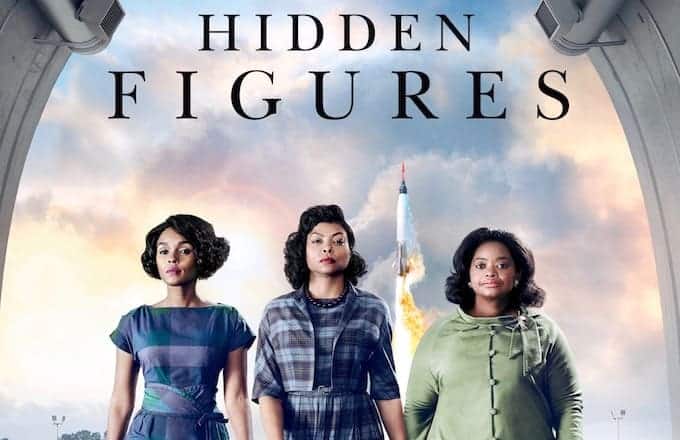
5
AprShooting for the Moon, Part I
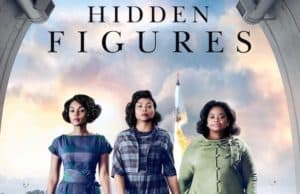 The National Air and Space Administration, commonly known as NASA, celebrates its 60th anniversary this year. The first orbit of the moon was Apollo 8’s December 1968 mission, the 50th anniversary of that this December marks the first of a series of significant Apollo mission anniversaries for NASA. 2018 also marks the 20th anniversary of Mercury Astronaut John Glenn’s return to space at the age of 77 on Shuttle Discovery, STS-95. The shuttle flight made Glenn both the first man to orbit the earth and the oldest person in space. Although I am a child of the Space Shuttle era, I find the earlier space programs Mercury, Gemini, and Apollo equally, if not more, interesting. I also find the stories of those who did the engineering and design work of getting man into space fascinating.
The National Air and Space Administration, commonly known as NASA, celebrates its 60th anniversary this year. The first orbit of the moon was Apollo 8’s December 1968 mission, the 50th anniversary of that this December marks the first of a series of significant Apollo mission anniversaries for NASA. 2018 also marks the 20th anniversary of Mercury Astronaut John Glenn’s return to space at the age of 77 on Shuttle Discovery, STS-95. The shuttle flight made Glenn both the first man to orbit the earth and the oldest person in space. Although I am a child of the Space Shuttle era, I find the earlier space programs Mercury, Gemini, and Apollo equally, if not more, interesting. I also find the stories of those who did the engineering and design work of getting man into space fascinating.
The Mercury Program ran from 1958-1963 and its purpose was manned orbit of Earth. Alan Shepard’s May 1961 flight (Mercury-Redstone 3 / Freedom7) as the first American in space and John Glenn orbiting Earth in February 1962 (Mercury-Atlas 6 / Friendship 7) are probably its most memorable missions. The Gemini Program, 1961-1966, had two man crews and its goal was to get the American Space program ready for the Apollo Program, including Gemini 4 in 1965 with the first spacewalk. The purpose of Apollo missions, 1967-1972, was manned lunar landing. The tragedy of Apollo 1 when Astronauts Gus Grissom, Ed White, and Roger B. Chaffee were killed in a launchpad fire, the first orbit of the moon in December 1968 (Apollo 8), the first man on the moon in July 1969 (Apollo 11) and Apollo 13 in April 1970 are probably its most memorable missions.
MLN collections have plenty of films and books about the America’s early exploration of space. There are popular movies based on true books and documentaries depending on your preference. In addition to the many books written about the space program, there are also several books written by early astronauts. There are also books about less well-known aspects of America’s early space efforts. An article I found online from Computer Weekly’s 2009 40th anniversary coverage of the Apollo 11 mission provides a technical explanation of the often heard comment about today’s smartphones being more powerful than the computers that powered the Mercury, Gemini, and Apollo spaceships. It’s a sobering thought that crosses my mind often as I read about or watch films about that era.
For the truly early years of America’s space program, Tom Wolfe’s The Right Stuff (1979) starts with Chuck Yeager breaking the sound barrier in 1947 and covers the Mercury missions. The book and movie of the same name are both in the Morrill Memorial Library collection. Although the film did not do well at the box office it received several Oscar nominations and in 2013 it was selected to be preserved in the United States National Film Registry. The Lost Moon: The Perilous Voyage of Apollo 13 by astronauts Jim Lovell and Jeffrey Kluger, and the 1995 movie Apollo 13, which was based on their memoir, are also both in the Morrill Memorial Library collection. Watching this movie today shows the difference in technology between 1970 and 2018 far more than when I saw it in the theatre and most people didn’t even have flip phones. An interesting bit of trivia regarding the two movies is Ed Harris plays astronaut John Glenn in The Right Stuff and Gene Kranz Flight Director for Gemini and Apollo missions in Apollo 13. If documentaries are more your speed three from 2008 include interviews with astronauts and NASA employees: When We Left Earth: the NASA Missions, In the Shadow of the Moon: Remember When the World Looked Up, and the HBO miniseries From Earth to the Moon.
When the first groups of astronauts were selected being a military test pilot was a prerequisite, this requirement eliminated racial minorities and women from the candidate group since in 1959 military test pilots were all white men. There were women and African-Americans who applied to be astronauts before the requirement was lifted in 1965 but it was not until the Space Shuttle era that America had female and non-white astronauts. They had a Dream: the Story of African-American Astronauts, by J. Alfred Phelps (1994), has chapters about six African-American astronauts including Edward J. Dwight, Jr., Robert H. Lawrence, Jr., Guion S. Bluford, Jr., and Ronald E. McNair. Dwight applied to the aerospace pilot research course at Edwards Air Force base in 1962 and was accepted in 1963. However he was not selected for an astronaut group. Lawrence was selected to an astronaut group in 1967 but died the same year in a plane crash. Bluford and McNair were both Space Shuttle astronauts. Two books from 2003 tell the experience of female pilots who underwent astronaut testing and training at the same the time Mercury astronauts did: Promised the Moon: the Untold Story of the First Women in Space, by Stephanie Nolan, and The Mercury 13: the Untold Story of Thirteen American Women and the Dream of Space Flight, by Martha Ackermann.
Margot Lee Shetterly’s 2016 book, Hidden Figures: the American Dream and the Untold Story of the Black Women Mathematicians Who Helped Win the Space Race, and the 2017 movie based on her book, bring the critical role African-American women played in the space race to a public audience. Both the book and the film are available in the Morrill Memorial Library Collection. Watching the women use slide rules for calculations and teach themselves how IBM punch cards worked was moments when the technology limitations of the time struck home.
Another more recent book that gives us insight into the wives and families of the early astronauts is Lily Koppel’s 2013 book, The Astronaut Wives Club: A True Story. The author conducted extensive interviews with “astrowives” and children. The book provides a different perspective on what Americans read in the 1959-1963 Life magazine coverage of the astronauts. Many of the women were no longer married to their astronaut husbands who at home were often not the heroes they were to the American public. It also makes the women real people who had interests and skills outside of the homemaker role shown in earlier books. For example, Trudy Cooper, wife of Mercury astronaut Gordon Cooper was an accomplished pilot herself. There was also a 2015 TV series with the same title based on the book.
If astronaut memoirs are more to your liking, memoirs by Mercury 7 astronauts include Moon Shot: the Inside Story of America’s Race to the Moon, by Alan Shepard and Deke Slayton, and Leap of Faith: an Astronaut’s Journey into the Unknown, by Gordon Cooper. Eugene Cernan was the last man on the moon during Apollo 17. His book, The Last Man on the Moon: Astronaut Eugene Cernan and America’s Race in Space, is also a documentary. For a non-astronaut account of the era, Gene Kranz’s book, Failure is not an Option: Mission Control from Mercury to Apollo 13 and Beyond, is an excellent option.
Check back next week for books about the Space Shuttle, children’s books about astronauts and information about some tourist sites that allow visitors to see this history in person.
Victoria Andrilenas is an Adult and Information Services Librarian at the Morrill Memorial Library in Norwood, Mass. Victoria’s column in the April 5th edition of the Norwood Transcript & Bulletin.
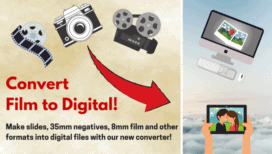
29
MarConvert Your Film to Digital
 Have you had old family home-movies, negatives from photographs, or slides from long-ago vacations sitting in boxes for years? Do you resist throwing these heirlooms away, yet lack the energy to investigate services that transfer them to modern formats? Would you love to surprise your loved ones with online slideshows or framed prints from the old days (or perhaps embarrass some siblings)?
Have you had old family home-movies, negatives from photographs, or slides from long-ago vacations sitting in boxes for years? Do you resist throwing these heirlooms away, yet lack the energy to investigate services that transfer them to modern formats? Would you love to surprise your loved ones with online slideshows or framed prints from the old days (or perhaps embarrass some siblings)?
Now you may borrow our Wolverine film to digital converter and bring your archival relics back to life! Simply insert slides, film reels, and negatives using various adapters, preview them on a small screen, and save them as files to upload for sharing online or making new prints. I used the converter on a batch of my mother’s slides from her teaching days in Southie, and found it incredibly easy to use, with clear instructions to guide me. It warmed my heart to finally see the images of my ma, from the 1960s and ’70s, and make her a batch of 4 x 6 prints. If you’d like to resurrect nearly obsolete formats and give them a second life, check out our film to digital converter and try it for yourself.
